100 Years After Racist Attacks, Why Berkeley Named a Street After This Indian Woman
When Kala Bagai, and her husband Vaishno Das Bagai, arrived at Berkeley in 1915, there were only close to 2,000 Indians living in the US.
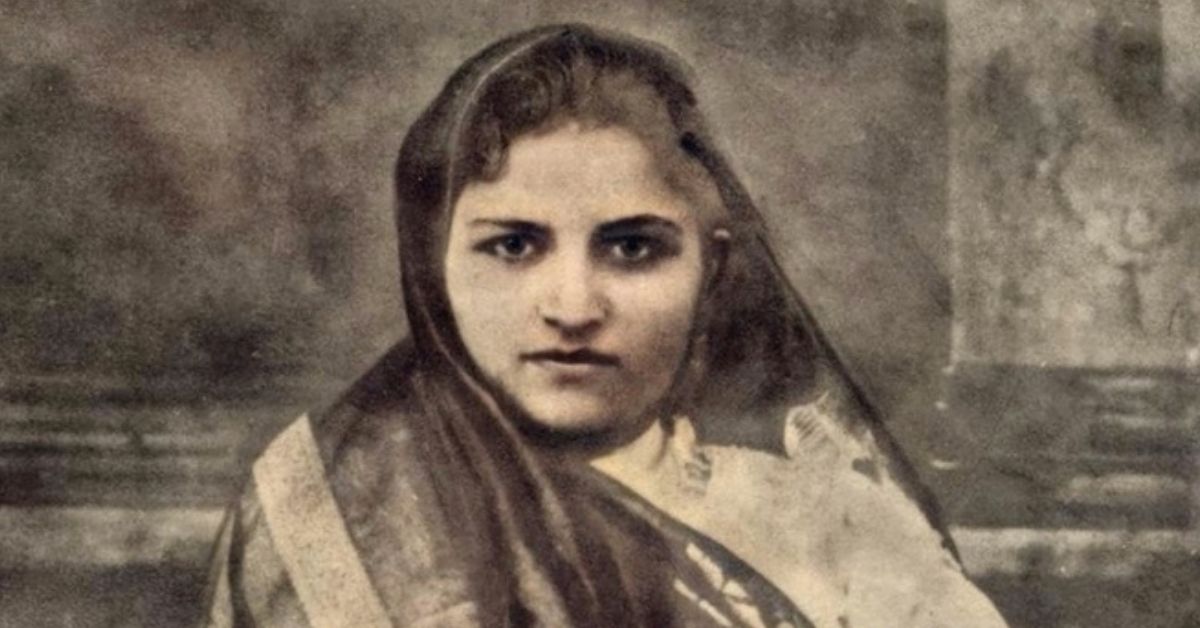
The year was 1915, when India was still struggling for independence. From what is now Pakistan’s Peshawar, a couple emigrated to the US with their three children, denouncing their British citizenship in the hopes of leading a life in a free land. But what they found was even more oppression and racism.
Vaishno Das Bagai and his wife, Kala, arrived with their three children at Berkeley with some gold and $25,000, at a time when there were only close to 2,000 Indians living in the US. Due to the immense racism they faced almost immediately upon arrival, they were forced to move from their home.
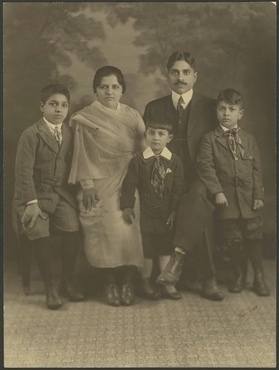
Now, over a 100 years since, (in September this year) the Berkeley City Council voted to have the two-block stretch of Shattuck Avenue named the ‘Kala Bagai Way’. But naming a street after a US immigrant came from reasons that were not usual. After all, Kala was not well-known, held no political office, never won any award — which are the most common reasons someone gets a street named after them.
How, then, is this street the first in Berkeley—and only the second in the US, after Kalpana Chawla—to be named after a South Asian woman?
Who is Kala Bagai?
Kala was born in 1892 in Amritsar, and married when she was only 11 years old. According to Rani Bagai, her granddaughter, Kala initially found herself lonely, and sad that she was away from her family. But her in-laws were good to her, and she grew to love her husband, with whom she had three boys — Brij, Madan, and Ram (Rani’s father).
When Kala arrived in the US, most Indians along the West Coast were single male sojourners. Her arrival was such a rare occurrence at the time that it made headlines — the San Francisco Call-Post printed a story claiming she was the “first Hindu woman to enter the city in 10 years”, with a giant photo of her holding her youngest son. The headline read — Nose Diamond Latest Fad Arrives Here From India.
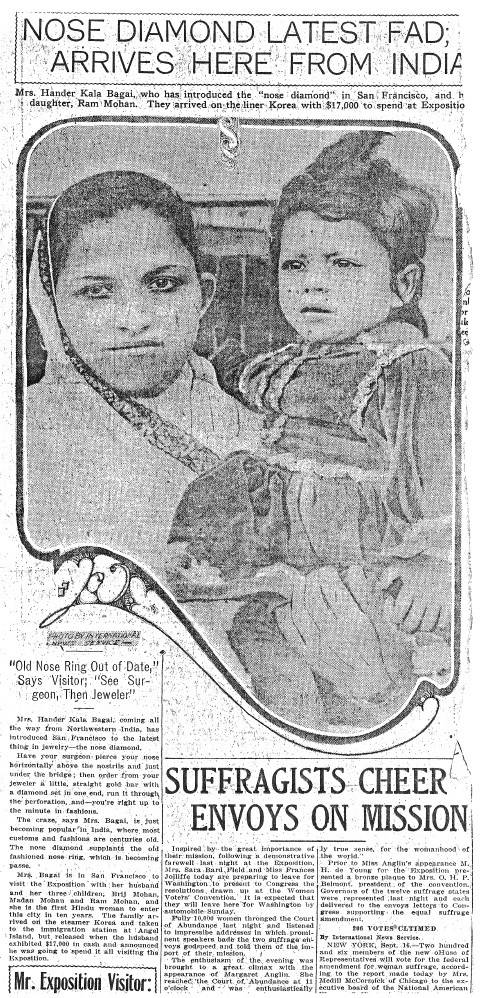
Kala didn’t know a word of English when she came to the US. Recounting her first few days in the foreign land to her granddaughter, she said, “The boat people said, ‘You cannot leave today. Saturday and Sunday. Monday, the office will open, then you can go’. When it was time to eat, they said, ‘chow chow chow’, which I understood meant to eat. I didn’t like the food at all. But I saw they were selling some fruits, so I bought some. But I didn’t know how much money to give. So I took it and put it on my hands…and let him take whatever he wanted.”
In contrast, Vaishno Das felt like he could thrive in his new environment. He spoke fluent English, wore dapper suits, and adopted Western mannerisms. Kala struggled with everyday tasks like shopping for groceries, and raising her three children without the help of a servant or house help. The couple eventually became acquainted with a German family that helped take care of their kids, and Kala began learning English. “They were such nice people,” she recalled to her grandchildren, years later. “They adored Ram (her youngest son).”
Vaishno Das also sent Kala to live with an American family for some time, so she could hone her English skills. “I stayed there for four to five months, maybe. Then I said, ‘To heck with it. I don’t want to stay here, away from my children and husband.’” she said in an interview submitted to the South Asian American Digital Archive on 26 November 1982.
Simultaneously, both husband and wife were working with the Gadar Party, which was an organisation dedicated to freeing India from the British. It was on an invite from a high ranking party official that the family had moved to the US. The Bagais worked with volunteers to produce a six-page weekly newspaper, which printed out 10,000 copies that sold throughout the country, and were also shipped to India, according to IndiaWest. In fact, while working with Berkeley’s student volunteers, Kala also created a welcoming community for other immigrants, among whom was Shyamala Gopalan — US Vice-President Elect Kamala Harris’ mother. Gopalan was a graduate of UC Berkeley. Kala acquainted little Kamala and her sister Maya in an area of the town known as Berkeley Flats.
A difficult path
Vaishno Das opened a general store named Bagai Bazaar in San Francisco, and bought a home in Berkeley. But on the day the family arrived with all their belongings, they found that racist neighbours had put a lock on their house to keep them from moving into the locality. The Bagais were forced to return to San Francisco, as both parents feared the neighbours would harm their children. They moved into an apartment above their store on 3159 Fillmore Street.
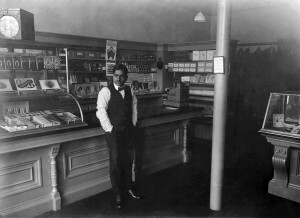
In 1923, the Supreme Court, in US vs Thind, ruled that Indians were not “white”, and were thus ineligible to attain citizenship of the country. Now, Vaishno Das and 64 other Indians, who had become naturalised citizens, were stripped of their citizenship and legally deemed persona non grata. Vaishno Das was then forced to liquidate his general store and other properties. In 1928, the government refused Vaishno Das a US passport, which became a hindrance in his bid to return to his family in India. The government instead suggested he obtain a British passport. But his allegiance to independent India was solid, and he refused to become a British subject again.
Under the pretext of a business matter, he went to San Jose alone, and took his own life by gas poisoning in a rented room. He left behind letters for Kala and their children, and also wrote to the San Francisco Examiner, stating that he had no choice but to take his life in protest.
Kala was left to raise her three sons alone, without her husband’s income or citizenship. “I was really lonesome. I was really lost,” she recalled to her son in a voice interview in 1982.
‘Mother India’
Undeterred, Kala raised her children and sent them to college. She also did something which was uncommon for Indian women to do back then — she remarried. Years later, Kala married an independence activist Mahesh Chandra.
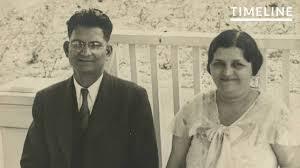
From here, Kala reinvented herself, Rani recalled in a story of her grandmother she penned for Berkeleyside on 12 March 2020. She attended night school, started wearing Westernised clothing, and even learned tennis. In 1946, with the passage of the Luce-Celler Act, Kala was granted American citizenship, which had been denied to her for far too long. Her youngest son, Ram, went on to become the president of the Hollywood Foreign Press Association (which gives out the Golden Globe Awards), and introduced Indian films and art projects to the American audience in the 50s and 60s.
Rani said it was her grandmother’s personal mission to create a welcoming community for immigrants. In the 1950s and 60s, she hosted Indian American cultural events and receptions, as well as benefit events at community halls, theatres, and homes. She passed away in 1983, but not before bridging the gap between the Western community and Indians arriving to a foreign land in search of a better life. Within the desi community, she came to be known affectionately as ‘Mother India’.
Coming full circle
“It’s really exciting to see a street named after an Asian American woman in a city that is 20% Asian American,” said Barnali Ghosh, who, with her husband Anirvan Chatterjee, has started The Berkeley South Asian Radical History Walking Tour. Kala’s journey is part of this tour’s archives.
Barnali added that naming the street ‘Kala Bagai Way’ was to highlight Berkeley’s racist history, and to educate the residents of the city of its ugly past.
“She is a symbol for people who did not get to live in Berkeley because of local racism and the national immigration policy,” Barnali said. She went on to add that it’s important to highlight and honour the history of Asians in Berkeley, who have lived in the city for over a century, and yet have few, if any at all, aspects that signify their contribution to the community.
A sub-committee of the City Council voted unanimously to rename the eastern stretch of Shattuck Avenue in July, and the recommendation was finally adopted in Kala’s honour in September.
At the time of growing racial tensions and a focus on “keeping intruders out” of countries where many go to seek a brighter future, Kala’s legacy strengthens the very cause many people of colour are fighting for. For many in the country who have similar stories, reading her name as they cross this new street will be a beacon of hope in these trying times.
Family material of the Bagai family, provided by Rani Bagai, can be found here.
A voice recording of Kala narrating her own tale to her grandchildren, in 1982, can be found here.
(Edited by Yoshita Rao)
If you found our stories insightful, informative, or even just enjoyable, we invite you to consider making a voluntary payment to support the work we do at The Better India. Your contribution helps us continue producing quality content that educates, inspires, and drives positive change.
Choose one of the payment options below for your contribution-
By paying for the stories you value, you directly contribute to sustaining our efforts focused on making a difference in the world. Together, let’s ensure that impactful stories continue to be told and shared, enriching lives and communities alike.
Thank you for your support. Here are some frequently asked questions you might find helpful to know why you are contributing?


This story made me
-
97
-
121
-
89
-
167













